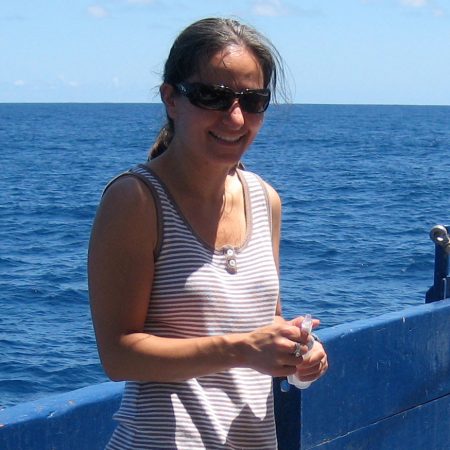
How do ocean gardens grow? Specifically, how do those gardens get nitrogen, which is critical to producing life, and will nitrogen sources to the ocean in the future be different as the ocean changes?
It’s a critical set of questions that has been stumping oceanographers for some time and has led Florida State University Assistant Professor Angela Knapp to far-flung places of the Earth. She and a team of researchers are trying to find out which parts of the ocean are best suited for a process called nitrogen fixation.
Their travels took them to the ocean far off the coast of South America where they dispelled a controversial theory that the ocean there was the best area for this process.
“We’re still on the quest for the optimal location,” she said.
The team’s findings are published in the March 14 issue of the Proceedings of the National Academy of Science.
Nitrogen fixation is the process by which nitrogen gas in the atmosphere is incorporated into the biomass of microscopic organisms, a process essential to the fertility of plants growing both on land and in water.
Without that process, there’d be no marine life.
“If the ocean ran out of nitrogen, the food web would crash,” Knapp said. “All life in the ocean would die.”
Knapp and her colleagues spent about 11 weeks at sea — split into two trips 13 months apart — using every geochemical tool available to measure carbon and nitrogen fixation in the region, as well as biological assays and molecular tools to get genetic profiles of the microbes carrying out nitrogen fixation.
In the end, they discovered that this area supports some of the lowest rates of nitrogen fixation in the global ocean, instead of the highest rates, as had been suggested by modeling and remote sensing work. This result provides clues to what supports abundant and active nitrogen fixing organisms because it means this region of the ocean is missing a critical component to support this process, perhaps iron.
“We found it wasn’t the ideal place for nitrogen fixation, but it does still provide insight as we move forward in trying to understand this issue,” Knapp said.

Figuring out exactly which areas of the Earth are best suited for this process is an incredibly difficult problem.
“It’s really hard to measure and get a handle on,” Knapp said. “We don’t know which regions of the ocean support the highest rates of nitrogen fixation, or which conditions are most favorable for the organisms that carry out nitrogen fixation.”
As our world changes, there is a need for scientists to figure out this process. Plants in the ocean are critical regulators of atmospheric carbon dioxide concentrations. Scientists, governments and environmental advocates want to ensure that marine life remains healthy and plentiful and that dead zones that already exist in ocean waters do not expand.
One of the largest dead zones in the world exists in the Gulf of Mexico, off the Louisiana coast. It’s about 6,474 square miles — the size of Connecticut and Rhode Island combined — and the lack of oxygen in these waters not only makes it difficult for large organisms such as fish to thrive, but actually removes nitrogen from the ocean.
Knapp’s co-authors on the paper are Karen Casciotti from Stanford University, William Berelson and Douglas Capone from University of Southern California, and Maria Prokopenko from Ponoma College.
The work was funded by the National Science Foundation.




